When you see a gecko climb up a wall, it’s hard not to be impressed. How does that little lizard cling to the surface with such ease? It turns out that geckos have some pretty special features on their feet that allow them to stick to walls and ceilings. In this article, we will explore the science behind how geckos stick to walls, and learn more about these amazing creatures!
What Makes Geckos Walk on Walls?
Geckos are able to stick to a wall thanks to their special feet. Each of the millions of microscopic hairs on their feet is covered in tiny bristles, which act like hundreds of tiny suction cups. This allows geckos to stick to walls even when they’re upside down!
On top of this, geckos also have some extra features that help them to climb. Their tails are prehensile, meaning they can curl around objects and provide extra gripping power. They also have sharp claws that dig into rough surfaces, creating a better grip while they’re climbing.
Van der Waals: The Force of Distance
So why do the hairs on gecko feet have such amazing sticking power? The answer lies in something called van der Waals forces. Named after Dutch scientist Johannes Diderik van der Waals, these are intermolecular forces that act between two molecules at a distance of less than one nanometer (1 billionth of a meter). [1]
In other words, when the tiny bristles on a gecko’s foot come into contact with the surface it’s climbing on, there is an instant attraction between the molecules due to these microscopic forces. This attraction is strong enough to keep the gecko stuck even if its weight is being pulled downwards.
This force of attraction can also be used to explain why geckos can stick to a variety of surfaces, from glass and mirrors to plasterboard walls. Different surfaces have different molecular structures, but the van der Waals forces between these molecules remain the same.
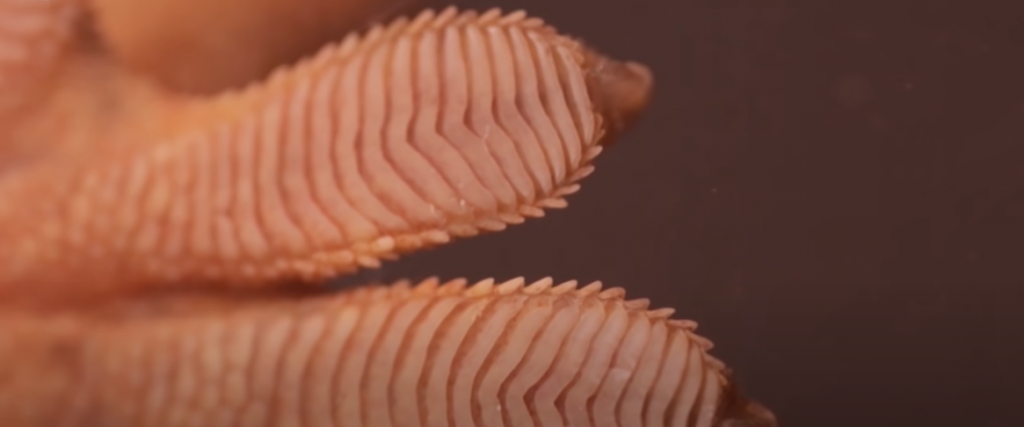
Sticky Toe Pads: The Physiology of Gecko’s Feet
Gecko toe pads are even more fascinating when you look at them on a cellular level. Each of their toes is covered in millions of microscopic hairs called setae, which are made up of thousands of even smaller bristles called spatulae. On the end of each bristle there is an even smaller tip which looks like a bulb or mushroom cap. This tip is where the van der Waals forces come into play; it is what creates the attraction between two surfaces, allowing geckos to stick to walls and ceilings. [2]
These hairs can also be used for other things besides climbing walls. They can act as tiny antennae that help geckos detect prey and predators in the dark, and they can provide traction when running across rough terrain.
What Is Not Happening?
It’s important to note that geckos don’t actually “stick” to a wall in the same way we think of glue or tape. They use van der Waals forces to create an attraction between two surfaces, but it is not a permanent bond. This means that when a gecko wants to move, it can easily let go of one surface and reattach itself to another.
This also explains why geckos are able to climb walls so quickly; they don’t have to wait for anything to dry or harden before they can move. All they have to do is release their grip on one surface and cling on to the next!
What Is Really Happening?
In summary, when it comes to geckos and their amazing ability to climb walls, there is a lot of science involved. They have evolved special toe pads with microscopic bristles that are covered in tiny tips. These tips interact with the molecules on the surface they’re climbing, creating an attraction between the two surfaces due to van der Waals forces.
As long as their weight isn’t pulling them down too much, these forces can keep a gecko stuck even if it’s upside down! All this helps explain why geckos—despite their small size—can climb almost any surface in no time at all!
Walkable Surface: Gecko’s Feet Succeed
Geckos’ feet have many advantages over other adhesives. For one, they don’t leave any residue when they let go of a surface, and they can be used to climb almost any material.
They are also incredibly strong; some geckos can even cling to smooth surfaces such as glass and metal. This makes them an ideal choice for applications where there is a need for a temporary adhesive that won’t damage the surface it’s sticking to—such as in medical settings or in robotics.
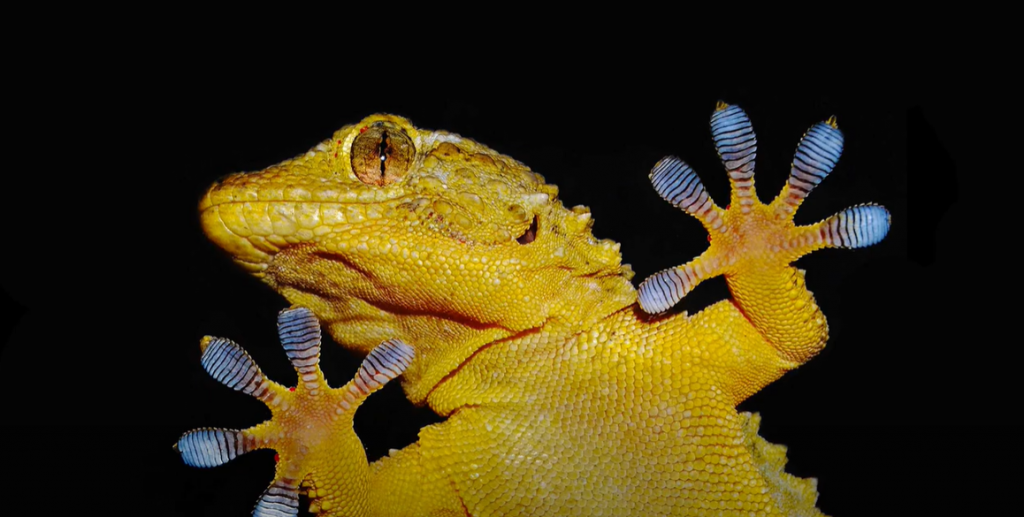
Unwalkable Surface: Gecko’s Feet Fail
As impressive as geckos’ feet may be, they do have some limitations. The attraction between two surfaces is only temporary, so if the gecko wants to move it has to let go and reattach itself somewhere else.
Also, while they can stick to almost any material, they can’t handle very slippery surfaces; this includes things like Teflon or highly polished metal. Furthermore, given their small size, even an adult gecko will struggle with anything heavier than its own weight—so for large objects you’ll need a different kind of adhesive!
Can All Geckos Walk On Surfaces?
While some geckos have more advanced toe pads than others, most species are capable of sticking to walls and ceilings.
There are also a few types of lizards that can do this as well—water dragons, for example, can use their toes to climb on wet rocks. The bottom line is that if you see a lizard running up a wall or hanging upside down from the ceiling, chances are it has something to do with those tiny hairs on its feet!
In Comparison: Gecko and Other Lizards
To compare, geckos are the best climbers. Their footpads are designed for maximum adhesion and strength.
Other lizards may have a greater range of motion or more powerful muscles, but their feet aren’t as well adapted for climbing surfaces. Some can climb vertical surfaces, but they will struggle with anything too slippery or heavy—and they’ll never be able to do it as quickly and efficiently as a gecko!
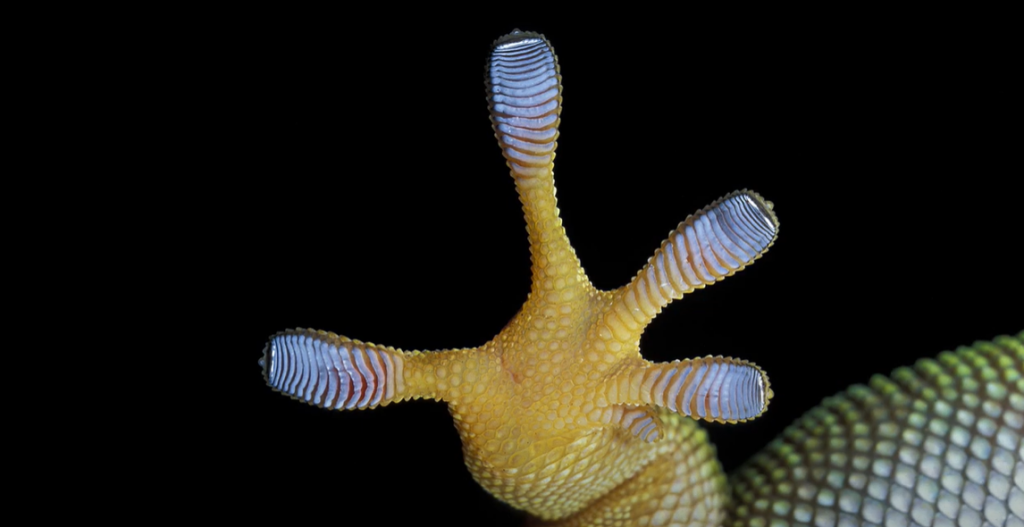
Lizards with Different Mode of Action
Not all lizards use the same method of attachment. Some, such as iguanas, have enlarged scales that act like suction cups. They are able to stick these to walls and ceilings in order to climb.
The basilisk is another type of lizard that has an interesting way of climbing; it can run on water due to its special toe pads that act like little paddles. This enables the basilisk to rapidly ascend vertical surfaces and even trees!
Lizards with the Same Mode of Action
Some lizards, such as anoles and skinks, have similar toe pads to geckos. They make use of van der Waals forces just like their more famous counterparts do.
The main difference is that their feet aren’t quite as specialized for climbing; they are better adapted for running on the ground or jumping from tree to tree. That being said, these lizards can still climb walls when they need to—although they usually won’t be able to do it with the same speed and agility as a gecko!
In Comparison: Gecko and Other Animals
Geckos aren’t the only animals that can scale walls and ceilings. Spiders, for example, have tiny bristles on their feet that they use to cling to surfaces.
Bats also have specialized toe pads that allow them to hang from ceilings and other surfaces! The bottom line is that there are lots of animals out there with amazing adaptations for climbing—but geckos remain one of the best! [3]
At the end of the day, it’s clear why geckos are so impressive; not only do they have incredibly strong footpads, but their toes also let them climb almost any material in no time at all! Whether you need a temporary adhesive or just want to show off your wall-climbing pet, a gecko is definitely the way to go.
The fascinating abilities of geckos have also been studied by scientists in order to create better adhesives for use in medical settings or in robotics. By learning more about the impressive abilities of these little lizards, humanity may be able to find new ways to tackle challenging tasks!
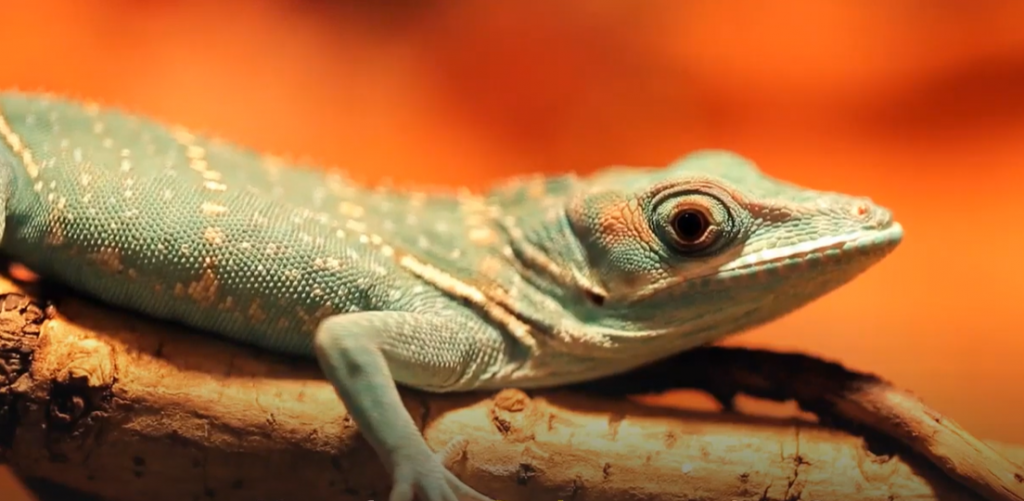
Animals with the Same Mechanism
The remarkable adhesive power of geckos is shared by many other animals, such as frogs, spiders and beetles. All of these creatures use a similar mechanism to stick to surfaces. They have tiny hairs on their feet that are hydrophobic (water-repelling) and covered in a thin layer of wetting fluid. This combination creates a powerful suction effect between the tiny hairs and the surface they’re clinging to.
This same mechanism can also be found in some human-made materials, such as Velcro or other hook-and-loop systems—but nothing quite compares to the real thing!
Animals with Different Mechanism
Some animals don’t rely on tiny hairs to stick to walls and ceilings. Bats, for example, have special toe pads that act like suction cups. They are able to hang from any surface thanks to the strength of their adhesive power!
Other creatures, such as frogs, and spiders use a different method; they produce secretions of glue-like substances that allow them to attach themselves securely. These secretions can be used in combination with the animal’s other features—such as sticky toes or claws—to create an even stronger grip.
In Comparison: Gecko and Technology
When it comes to how geckos stick to walls, nature has a distinct advantage over man-made technology. Geckos can quickly and easily scale vertical surfaces with ease, while robotic grippers are often limited in their ability to do this.
The remarkable thing about these van der Waals forces is that they don’t require any kind of liquid or mechanical clamping to work. All the gecko needs to do is press its foot against a surface and it can stick. Every time the gecko takes a step, the attractive forces are renewed — allowing it to keep moving up walls and other vertical surfaces with ease.
This property of van der Waals forces has inspired scientists to develop new technologies that mimic what geckos do naturally. In recent years, researchers have developed robotic grippers that utilize similar electrostatic attraction technology for climbing glass surfaces and even walking on ceilings! [4]
These technologies still aren’t quite as effective as the gecko’s feet, but they showcase just how remarkable an amazing creature this reptile is — and how valuable its talents are for the development of mankind’s future technologies.
So next time you see a gecko out and about, take a moment to admire its incredible abilities! Nature truly is extraordinary — something that never ceases to amaze us.
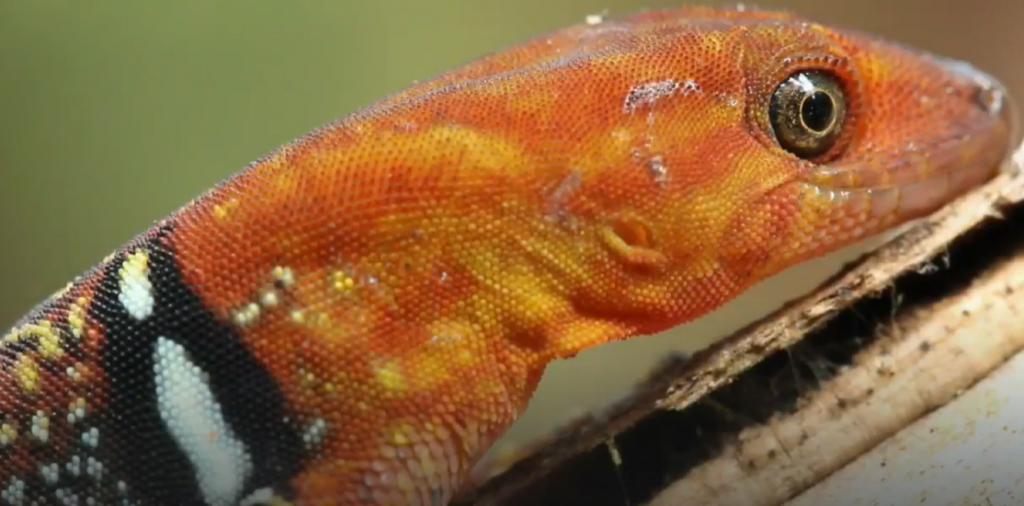
FAQ
How do geckos stick to wall chemistry?
Geckos have an amazing ability to stick to walls and ceilings that has puzzled scientists for decades. Recent research has revealed how geckos use tiny hairs on their toes, called setae, to adhere to surfaces using a phenomenon known as van der Waals forces.
The tiny hairs on the gecko’s toes are covered in millions of tiny, hair-like structures known as spatulae. These spatulae are so small that they cannot be seen by the naked eye, but through a microscope their structure is revealed to be composed of hundreds of finer hairs.
Each of these individual hairs on the gecko’s foot has a sticky end that is composed of a highly specialized sugary material. These sticky ends are attracted to the microscopic bumps on the surfaces they touch, creating a strong adhesion between them.
At the molecular level, van der Waals forces play an important role in this adhesive process. Van der Waals forces occur when two molecules interact and form a weak bond due to the attraction of their electrons. This weak bond is strong enough to keep geckos’ feet securely attached to a surface when they walk on it.
The advantage of this adhesion method is that it is reversible and can easily be applied or removed from surfaces without damaging them. So, next time you see a gecko scaling up a wall, don’t forget to thank the tiny hairs on its toes!
What bond helps geckos stick to walls?
Geckos are able to stick to walls due to van der Waals forces. These forces occur between two molecules and cause them to be attracted to each other. While not as strong as chemical bonds, these weak interactions help geckos latch onto surfaces with great force.
Do geckos bite?
Geckos are not known to bite humans and generally avoid confrontation. However, if threatened or cornered, a gecko may bite out of self-defense. These bites can be painful but are usually harmless.
Can geckos stick to anything?
Geckos are capable of sticking to a wide range of surfaces, including glass, wood, and plaster. This is due to the tiny hairs on their toes that create an electrostatic attraction with the surfaces they touch. However, geckos can’t stick to all materials — some such as Teflon are too smooth for them to get a grip.
Useful Video: How Do Geckos Walk Up Walls?
Conclusion
So, how do geckos stick to walls? It’s all thanks to the millions of tiny setae on their toes that help them create van der Waals forces. This adhesive force is what gives geckos the amazing ability to walk upside down and even across ceilings! Now that you know a little more about how these creatures are able to cling to surfaces, you can impress your friends with your knowledge the next time you see one scurry up a wall.
References:
- https://en.wikipedia.org/wiki/Van_der_Waals_force
- https://www.livescience.com/47307-how-geckos-stick-and-unstick-feet.html
- https://link.springer.com/10.1007/978-3-319-47829-6_1181-1
- https://www.livescience.com/48845-gecko-inspired-tech-climbing-walls.html



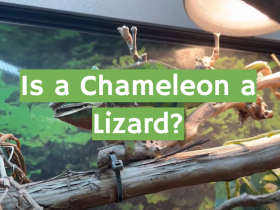


Leave a Review